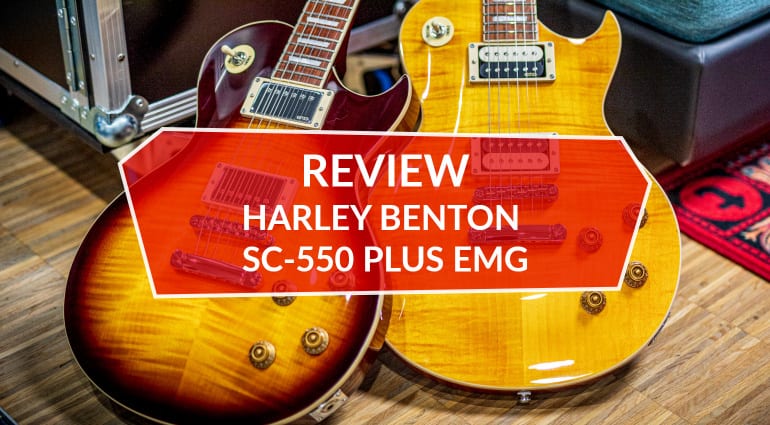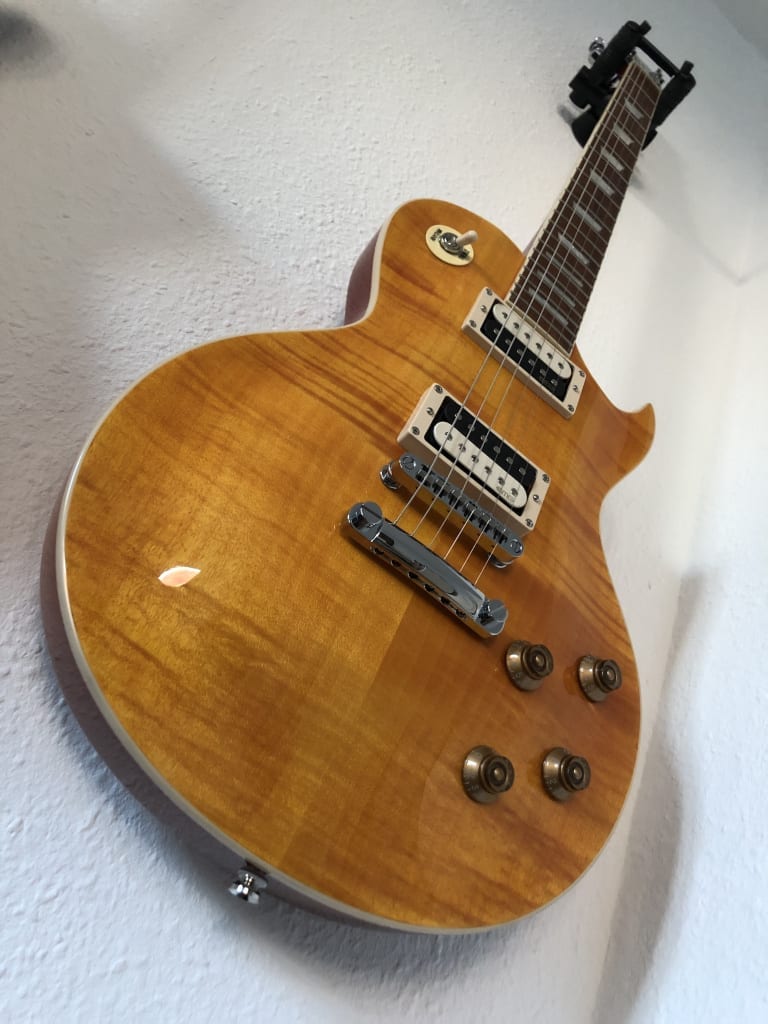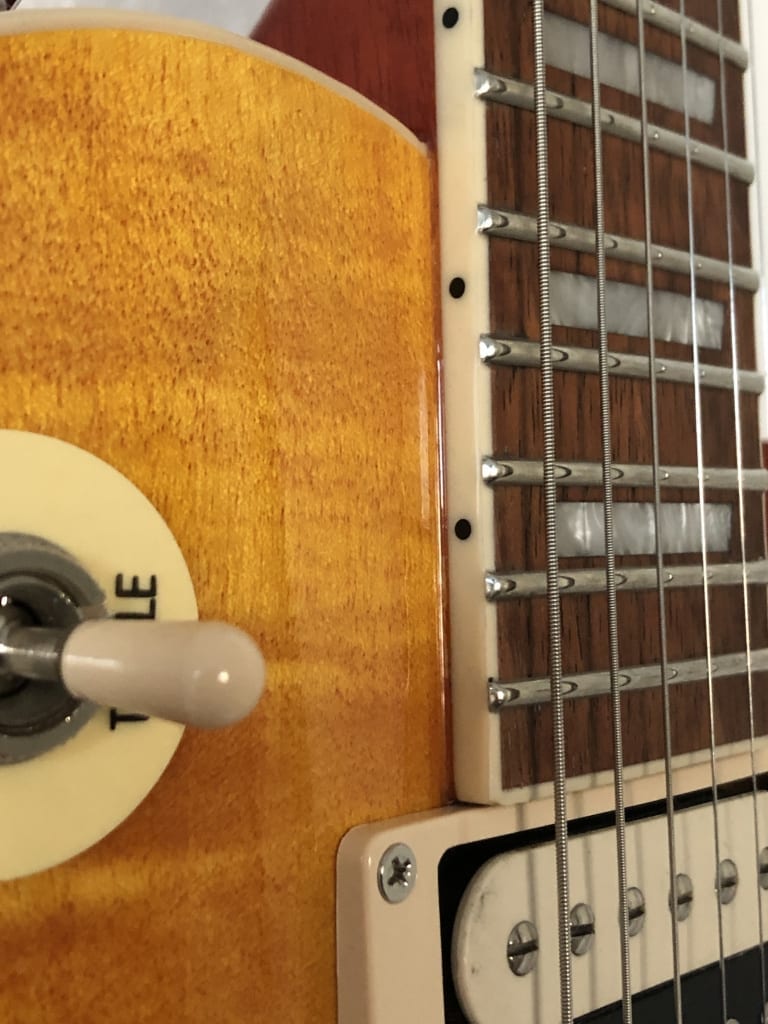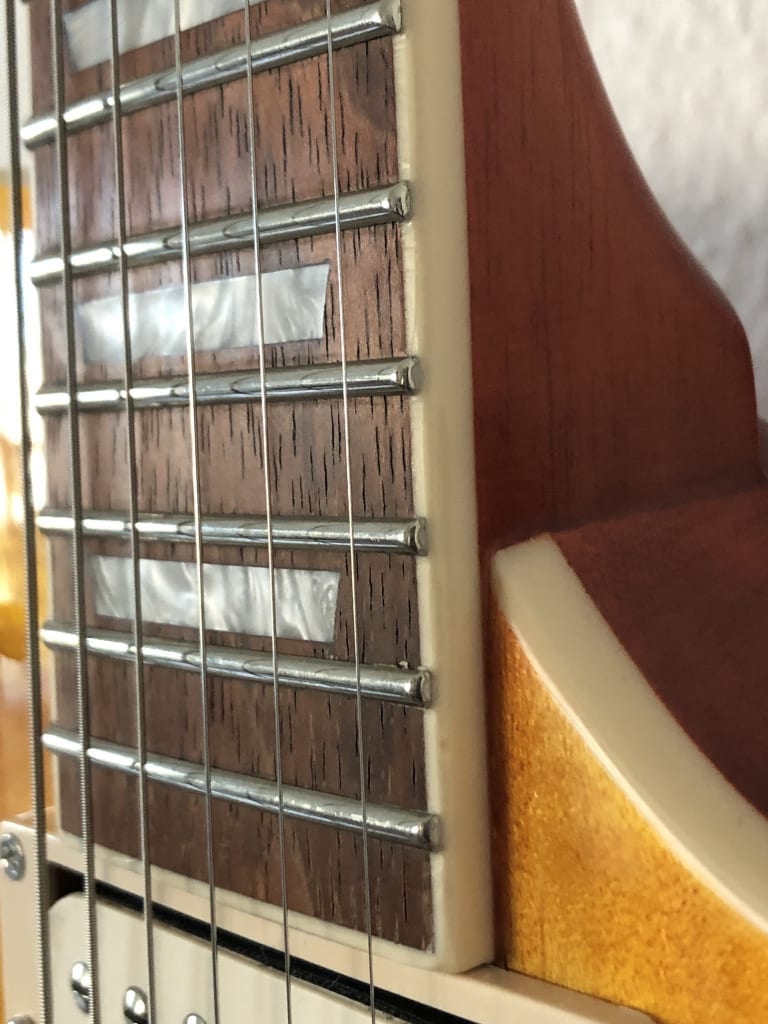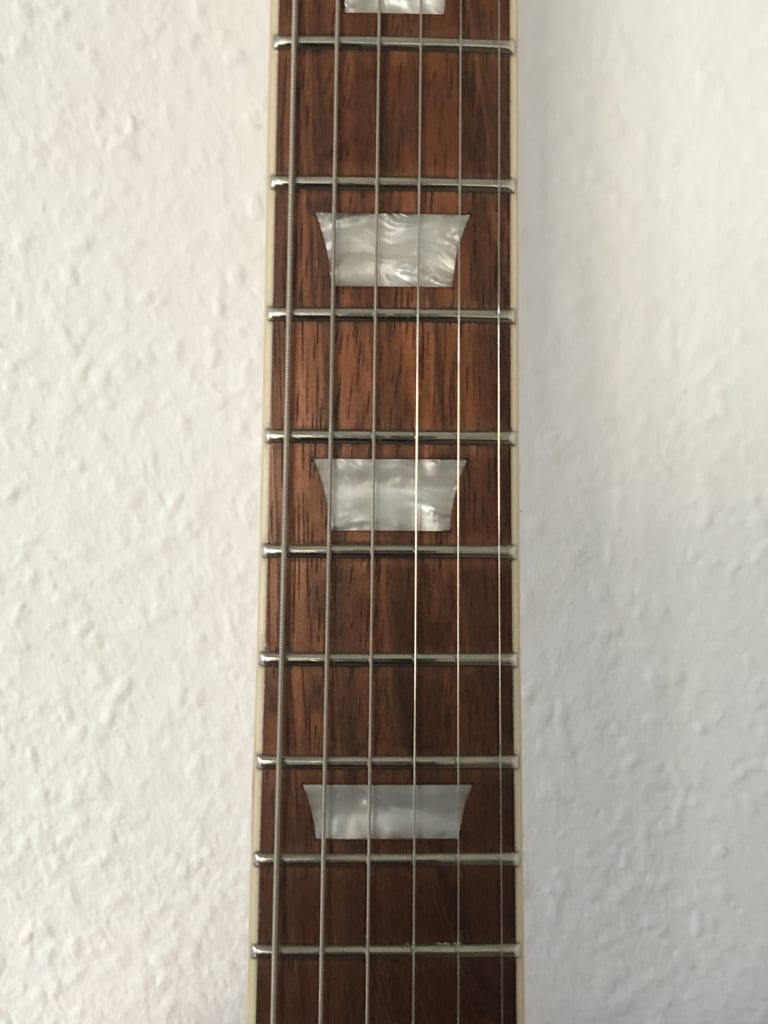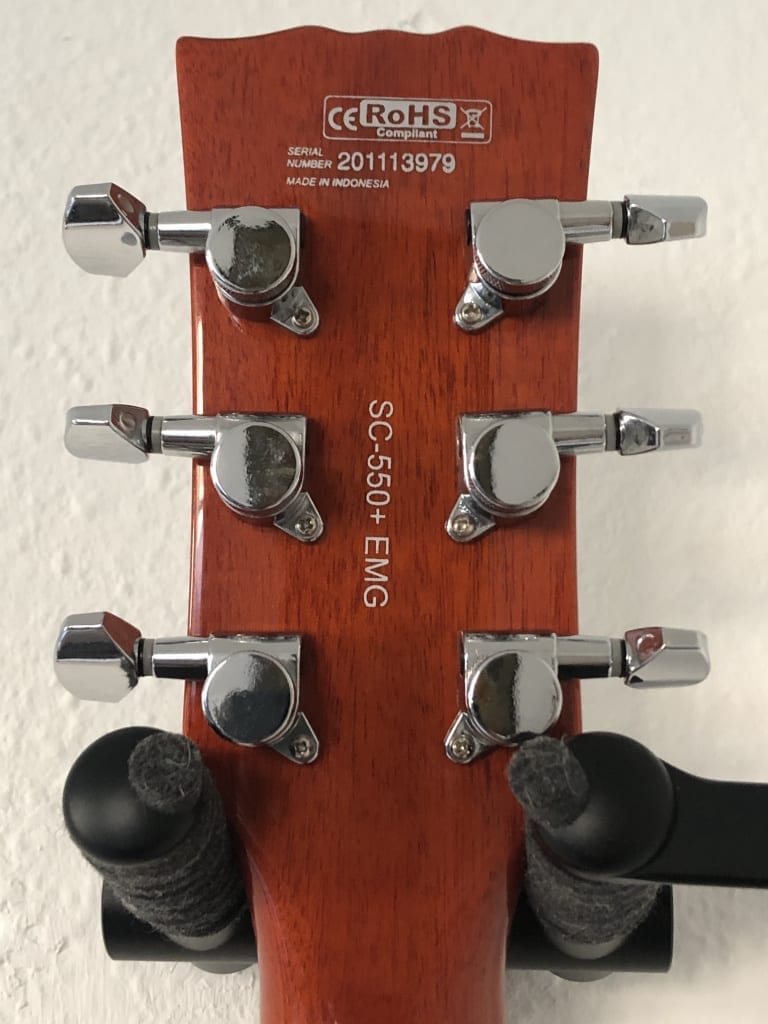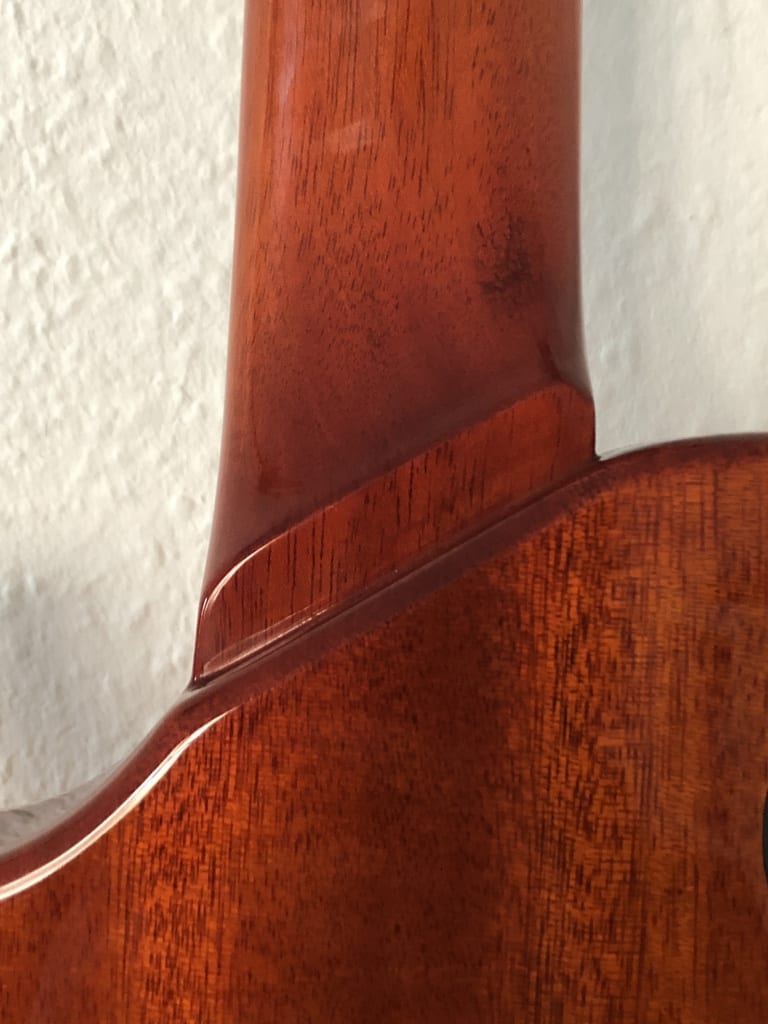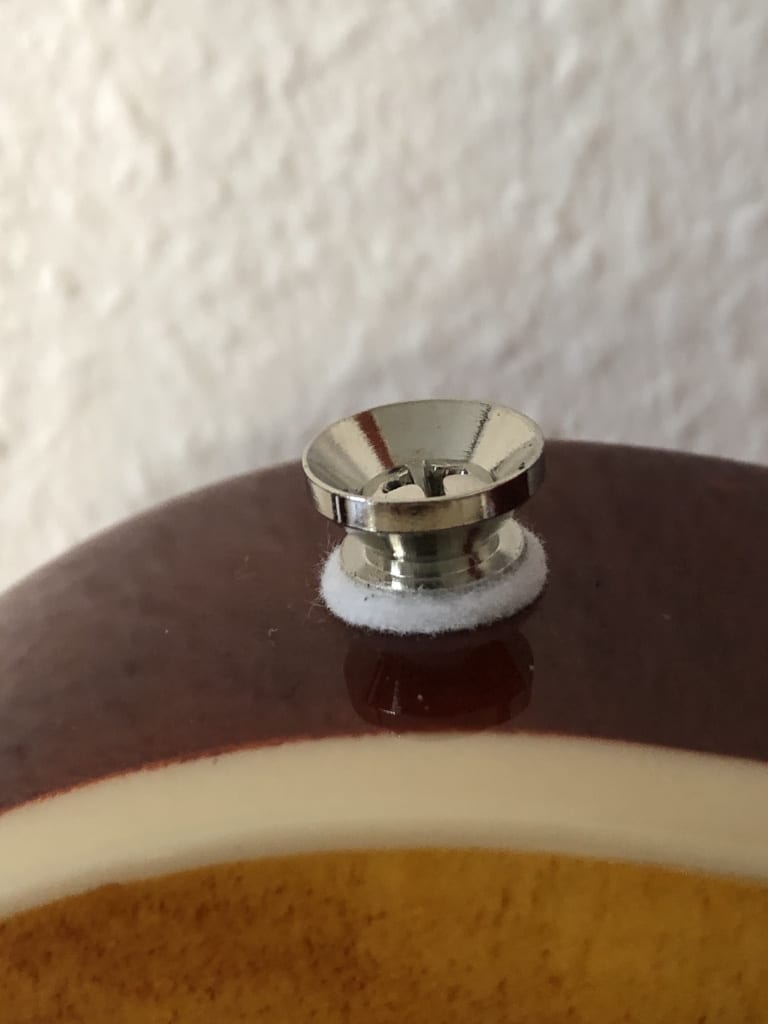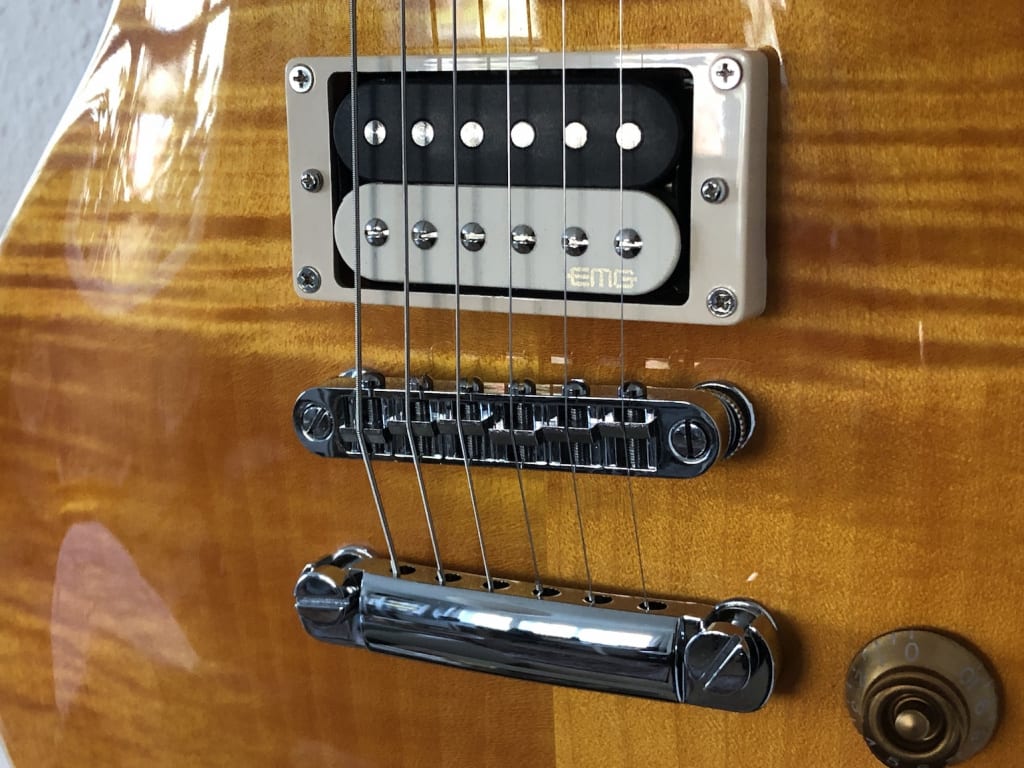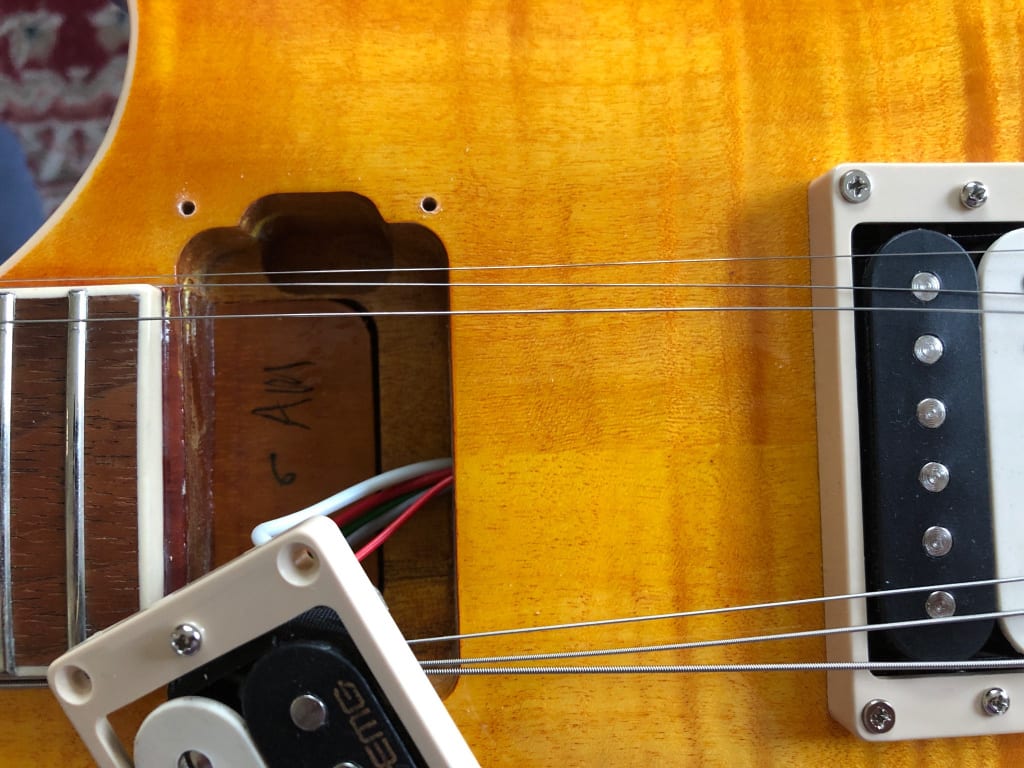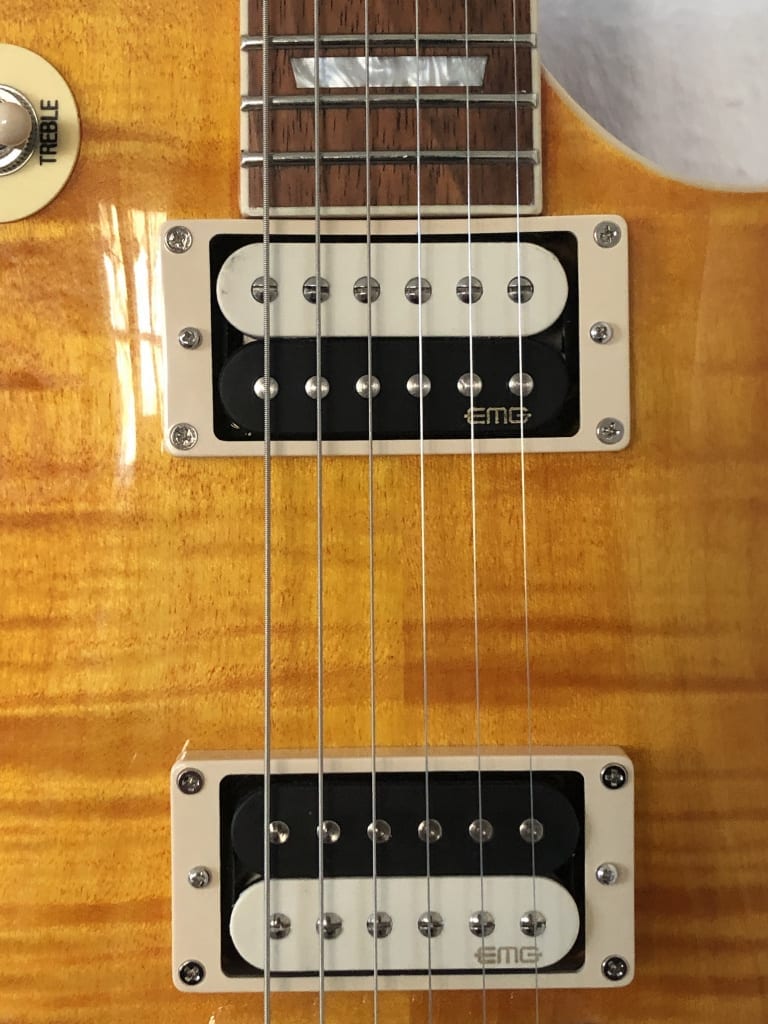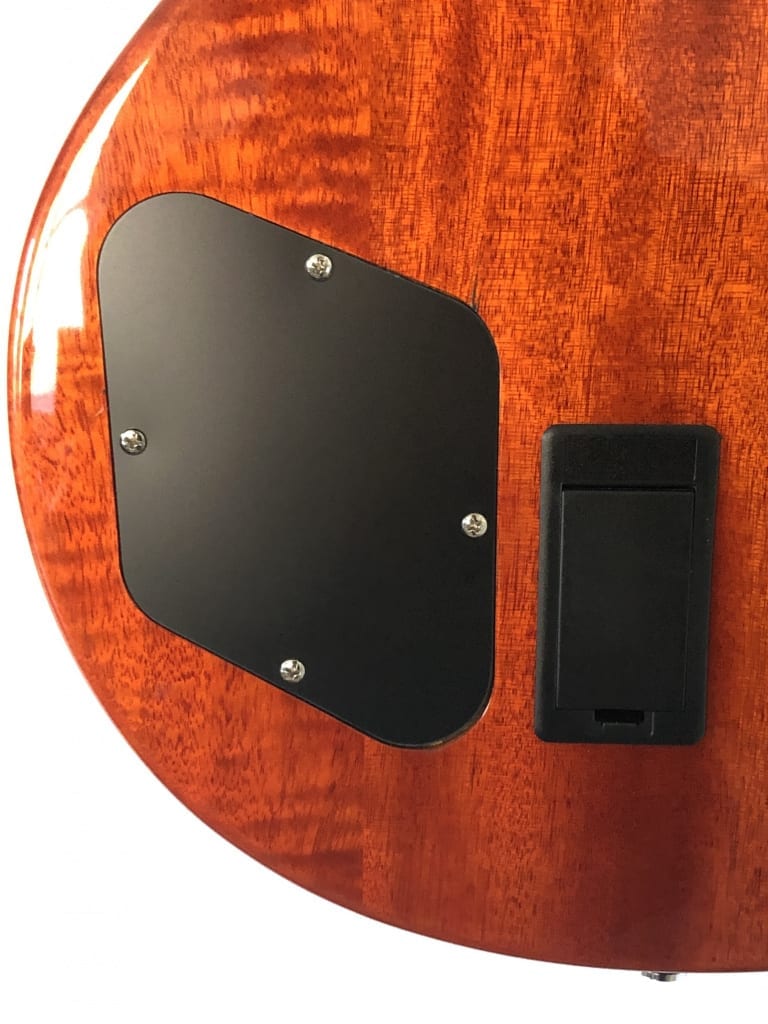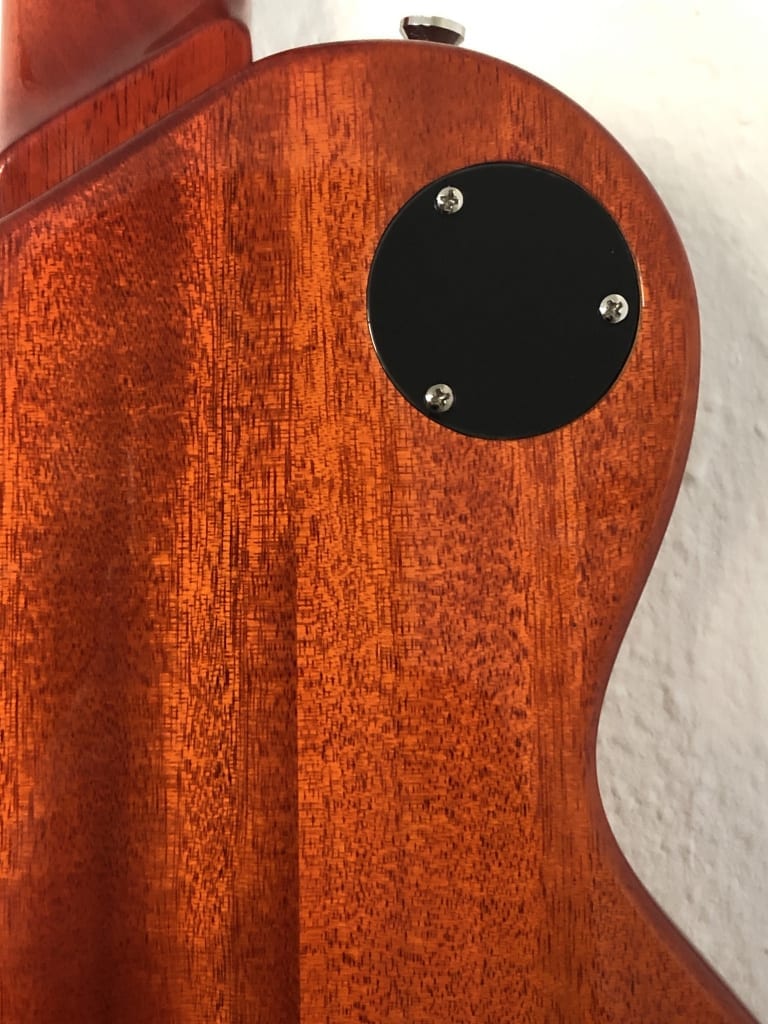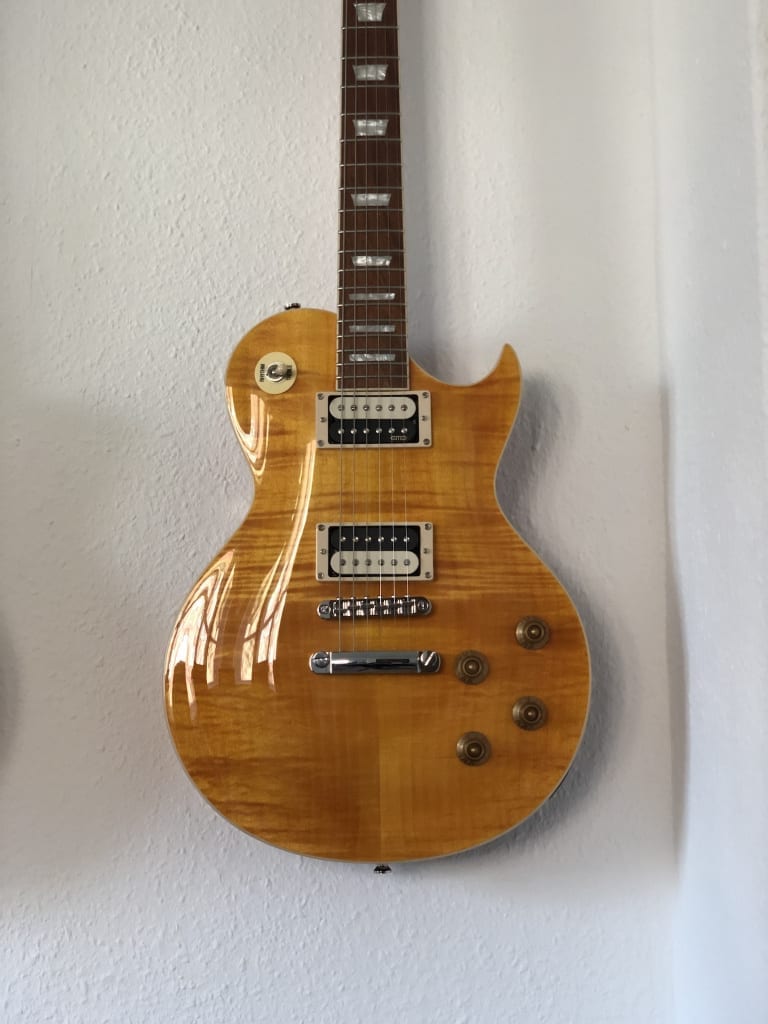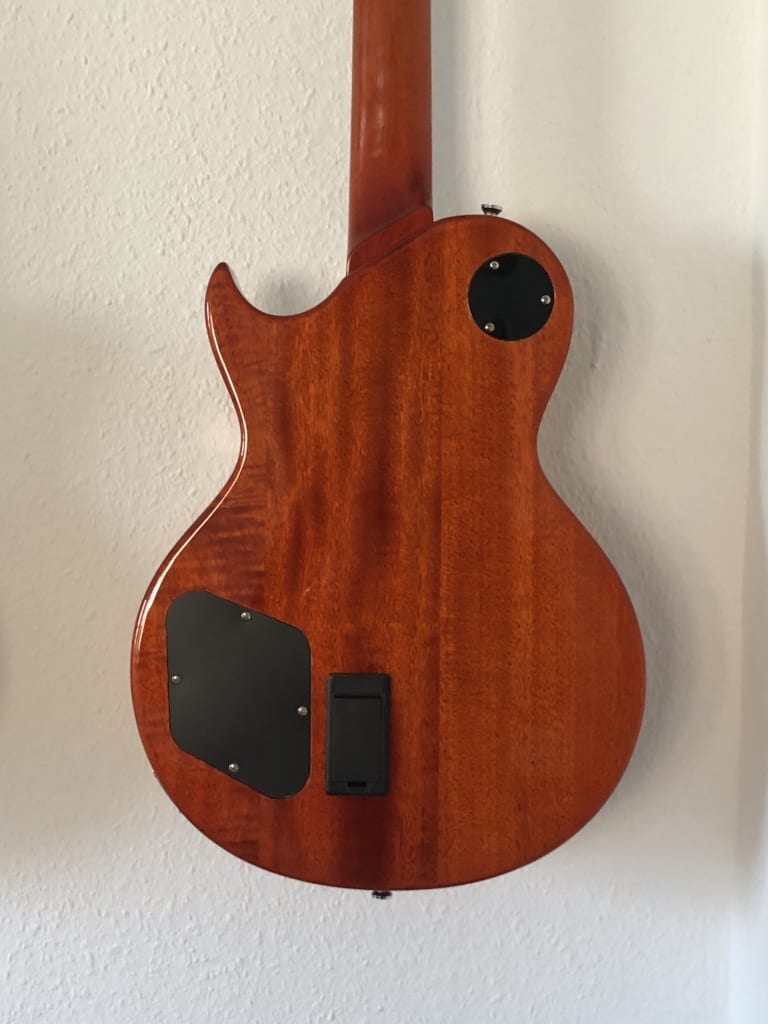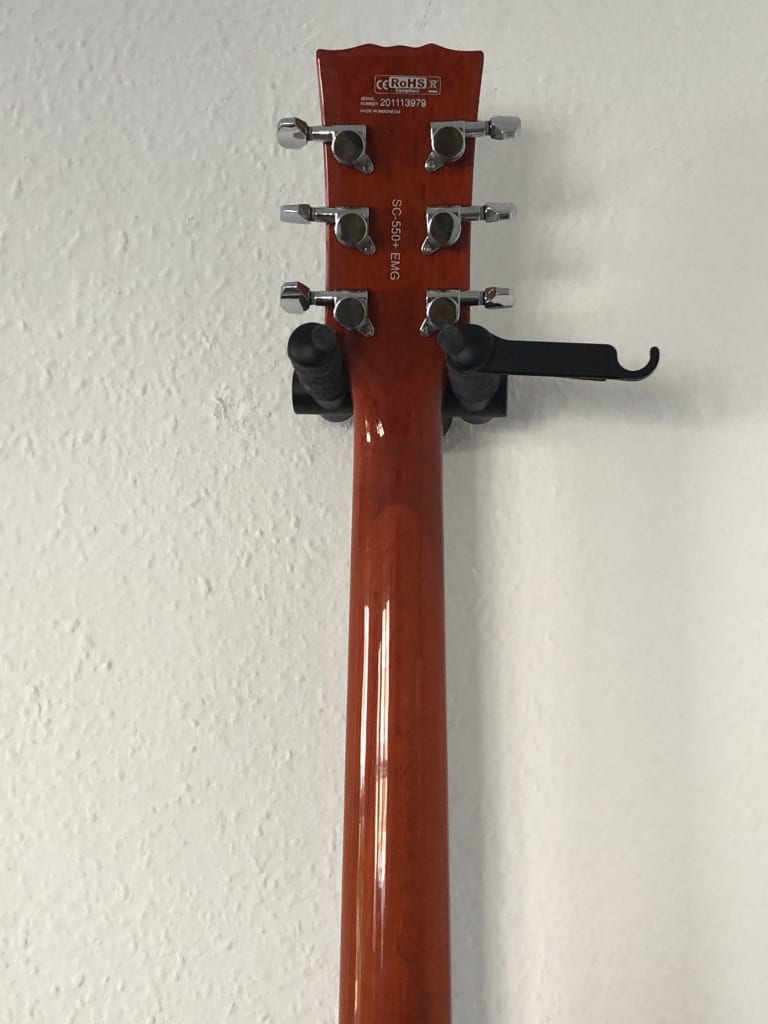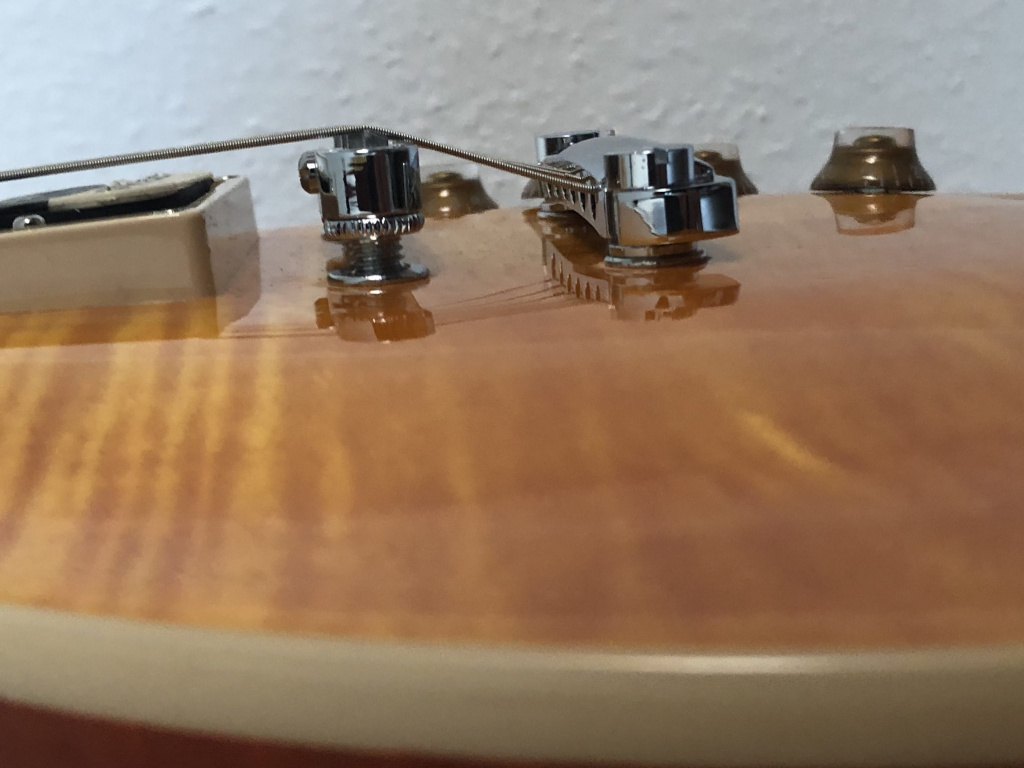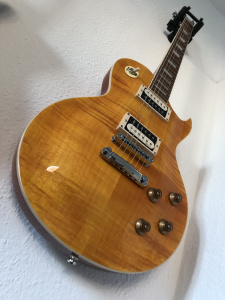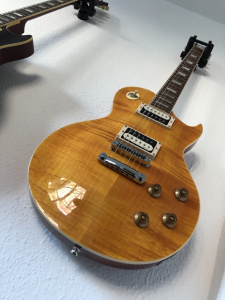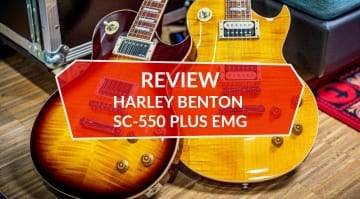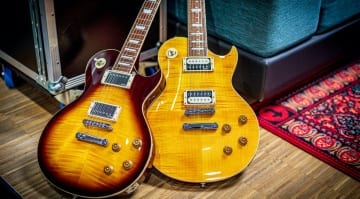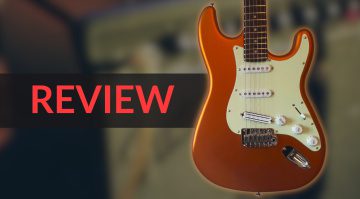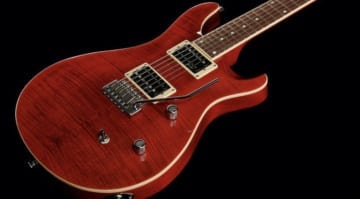Review: Harley Benton SC-550 Plus EMG ups the ante for budget single-cuts
Harley Benton recently announced its new SC-550 Plus EMG model, upgrading the already existing SC-550 model with active EMG pickups. It certainly boasts some impressive specs, but how does it perform? Is this budget single-cut ready for serious scrutiny?
The folks at Harley Benton were kind enough to send us an HB SC-550 Plus EMG model to review. Harley Benton is known for its affordable instruments, and just a cursory glance through internet forums shows that it is quite popular indeed. I hadn’t had the chance to try one out yet, but if internet lore is to believed, they provide fantastic value for money, and are really good for beginners and more experienced tinkerers alike.
Disclaimer
I think I was expected to submit this review in time for the launch of the model. The reason that didn’t happen is that I was just shocked by this instrument (!). Not because it was bad, but because it wasn’t. At this price point, I thought I’d have to be pretty generous in my review. And I really wanted to be thorough, seeing that we are affiliated with Thomann. So I actively looked for flaws in the instrument, which meant that writing the review took more time. Spoiler alert: I don’t know if the company sent out a particularly nice model for us to review, but this guitar is awesome.
First Impressions
The guitar shipped without a case. Not a problem, as it was extremely well packed. After unboxing it, the first thing I noticed was: this thing feels solid. In fact, I was really surprised. In my experience, “budget-friendly” guitars have a certain, well, flimsy feel. Not so with this guitar. It feels good.
A cursory glance revealed no obvious flaws or blemishes. Fit and finish are good. The binding is better than on my two Metalocalypse Epiphones. Inlays are neat. Fretwork is very good and the fretboard edges are nice and round and soft, with no jagged fret ends. No major marks anywhere on the fretboard or frets. And recessed backplates!
- Fingerboard edges are smooth · Source: Gearnews.com
- Fingerboard edges are smooth · Source: Gearnews.com
- All frets are nicely dressed · Source: Gearnews.com
Tuning up
It was a bit out of tune when it arrived, and while tuning, the D-string broke at the tuner end. Luckily, it comes shipped with D’Addario NYXL 10-46, and I had a couple of packs lying around, so that was an easy fix. The guitar comes with locking tuners, but I didn’t feel they were particularly great. They do make string changes easier, but I would want to replace them.
- Back of headstock and locking tuners · Source: Gearnews.com
- Neck heel for better upper fret access · Source: Gearnews.com
- Strap buttons with felt rings · Source: Gearnews.com
Once strung up and tuned, there was a buzz coming from somewhere. It turned out to be a loose screw on the pickup ring. Also no big deal and a quick fix with a screwdriver. The box also included a 9 Volt battery for the active pickups and a hex key for the truss rod.
Looks
The model I received is in a very fetching Faded Amber finish. At first glance, it looks to have a mahogany neck and body, but it’s actually a 3-piece Okoume body and a Nyatoh neck. The body has a nicely carved top with a flame maple veneer. The neck has a roasted Jatoba fretboard and a 24.75” scale-length.
The binding is neat with very little finish bleed, if any. I had to really scour the binding to find faults. The set neck has a scarf joint and an angled heel that makes reaching the upper frets much easier. It even has a long neck tenon! Hardware consists of a graphite nut, a Tune-O-Matic style bridge and stop tail, and locking tuners. Straplocks are in the usual places, and have felt rings, which is a nice touch.
- AA flame maple veneer · Source: Gearnews.com
- Long neck tenon · Source: Gearnews.com
Unplugged
Playing it unplugged, the guitar sounds vibrant and resonant. Intonation is very good, and the action is fine, although a tad high for me (more on that later). All the frets seem level, you can bend for miles without having the notes choke out. Everything feels smooth and comfortable.
Active pickups with a vintage sound
I’m not an active pickups guy. I’ve usually associated EMG pickups with high-output, mega-gain, screamy tones. So I wasn’t sure the pickups would be my cup of tea. Again, I was proved wrong.
The SC-550 Plus comes with EMG Retro Active Fat 55 Alnico 5 humbuckers that are based on vintage PAF-style humbuckers, so they were familiar territory.
- EMG Retro Active 55 humbuckers · Source: Gearnews.com
- Recessed backplate and battery compartment · Source: Gearnews.com
- Recessed backplate · Source: Gearnews.com
Active pickups will get you a more or less consistent sound, plugged through an amp or not. This is obviously a big bonus for players using digital emulators. Also, if you want to swap the pickups for another active set, you don’t need to gouge out any wood.
As expected on this style of guitar, each pickup has its own volume and tone controls, and you can select the pickups using the 3-way switch on the upper bout. No fancy push-pull electronics here. The pots themselves work fine and are smooth, and the control cavity is shielded.
Plugging it in
The guitar sounds well-balanced, no doubt aided by those EMG pickups. The neck pickup is warm without sounding muddy, and the bridge pickup has the bite we’d expect from this style of guitar, without getting ice-picky. Running it through lots of gain still had the notes ringing true without turning into a big sonic mess. Intonation is fine throughout. It’s a joy to play!
The neck is super comfortable. As mentioned, the edges are round and smooth. It’s not chunky, nor shredder-slim. The specs say it’s a 1960-C, which is probably about right. It does turn more D-shaped, or a bit flatter as you go up the neck.
- Front · Source: Gearnews.com
- Back · Source: Gearnews.com
- Neck with scarf joint · Source: Gearnews.com
A little tweak
In fact, it was so much fun to play, I thought I’d optimise it for myself. I lowered the action just a bit, and fine-tuned the intonation. All I needed was a flathead screw-driver, the screws weren’t stiff at all and turned easily. It took just a few minutes and it really improved the playing experience.
The bridge and tailpiece are fine. The bridge is fixed using posts and the screws for the string saddles face the neck in the traditional way. I did think that the neck angle may be a bit steep, as the strings were almost touching the back of the bridge. It’s not a problem unless you wanted to raise your action a fair bit. Or you could raise the stoptail to give it a shallower angle.
How does it compare?
At €379, this is a lot of guitar. In fact, I think it could stack up well against guitars three times the cost. And if not, I would say that the major difference would be in the sound. As far as playability was concerned, the guitar plays great. And at 3.7 kg, it’s just about the right kind of weight for a non-chambered single-cut solidbody.
- HB SC-550 Plus EMG · Source: Gearnews.com
- Looks good · Source: Gearnews.com
Room for improvement?
The only improvement I can think of would be to add a tummy cut. Would it raise the cost? Maybe. But if within reason, I think it’s worth it. Harley Benton has already altered the heel joint and the design a bit and I think a tummy cut would make it more comfortable, and give it that much more of an edge.
Should you buy one?
If resale value or brand names are not important, this guitar is definitely worth checking out. It is well-built, and I’d have no problem taking it to the studio, or a show, where I think it would perform splendidly. So my answer would be, yes.
The SC-550 Plus EMG is a fantastic purchase if you need a nice, traditional looking single-cut guitar that sounds good, plays good and doesn’t break the bank. Yes, a string did break, and yes, there was a bit of a rattle. At this price, I don’t mind. If I was a beginner, the setup it came with would have been fine. The action was low enough and the intonation was also good enough for me to not want to give up guitar, as can sometimes tend to be the case with a bad setup.
An anomaly?
Maybe Harley Benton sent us a particularly well made guitar to try out. If so, and you don’t get a guitar that plays and looks and feels like I have been raving about it, get in touch with the guys and tell them that you want the guitar from the review! So far, all my dealings with the guys at the company have been pleasant, and it seems they are more than accommodating. The guitars the company makes are definitely on my radar now.
Below are our affiliate links to Thomann. If you end up buying using this link, we’ll get a small commission while you pay the same price.
More Information
Note: This post has been amended since it went live. The previous version stated the guitar has a maple cap; in fact the veneer is applied to carved okoume.

 4,8 / 5,0 |
4,8 / 5,0 | 